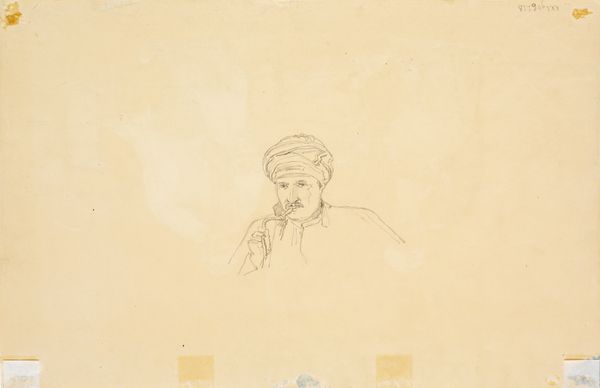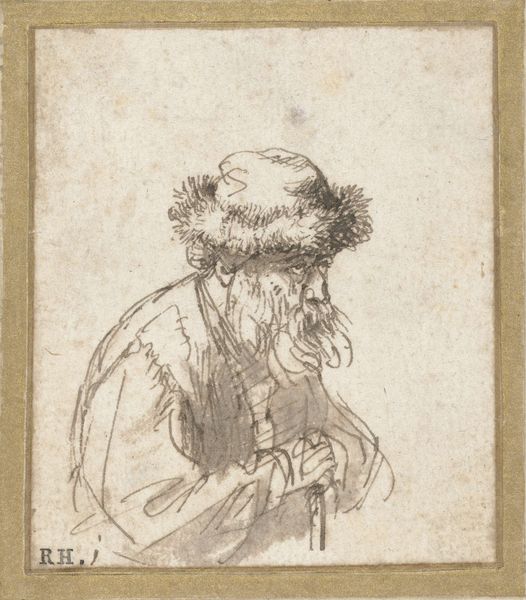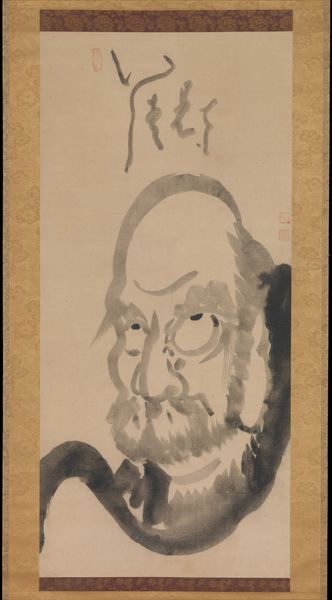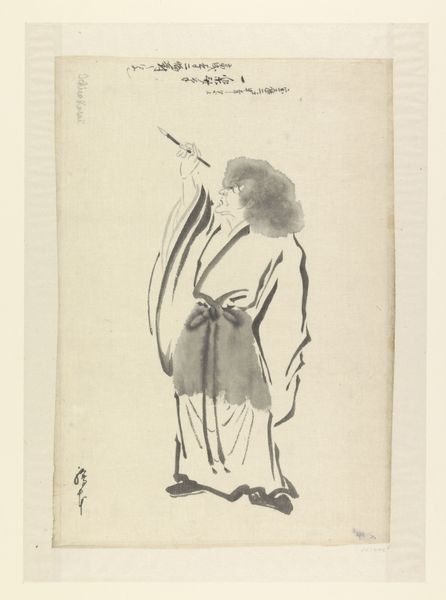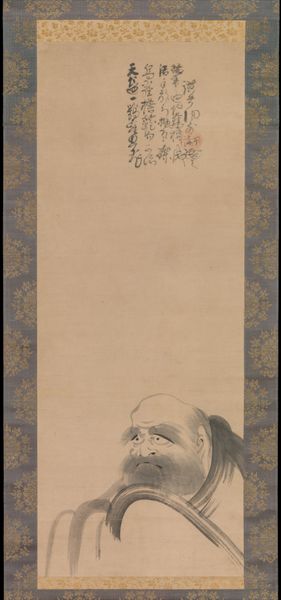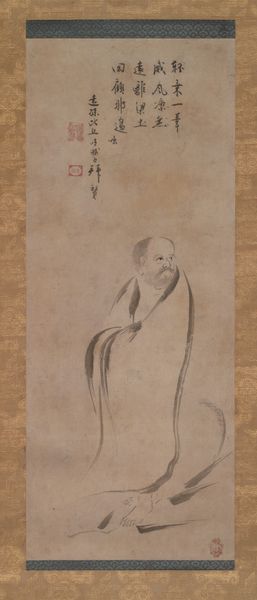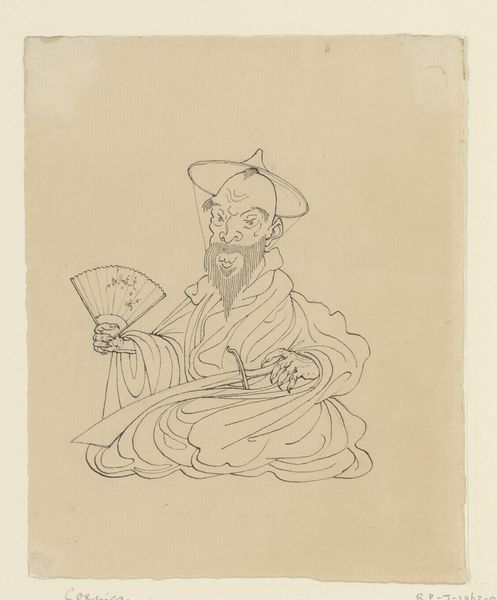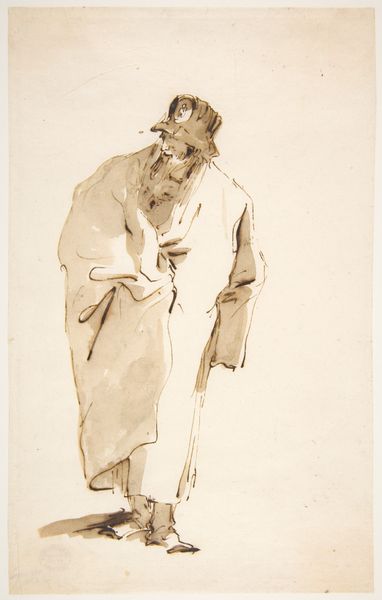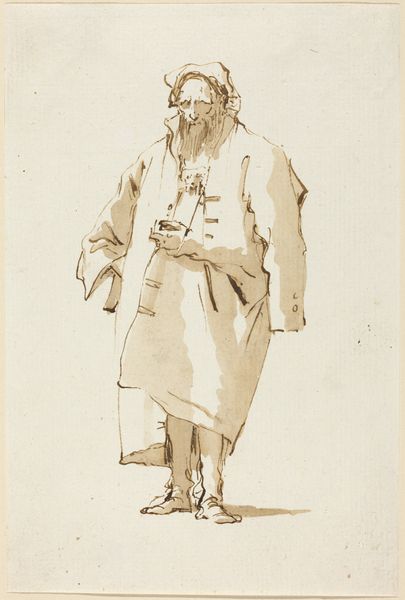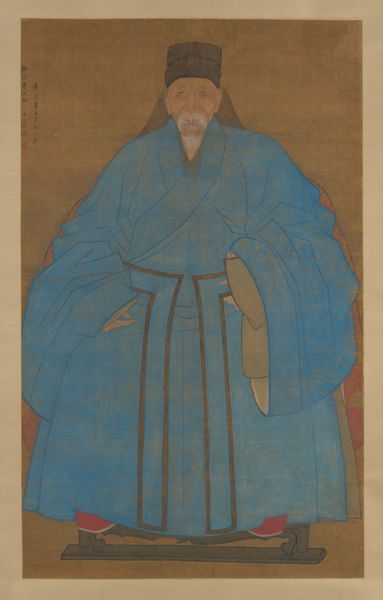
hanging-scroll
#
amateur sketch
#
light pencil work
#
shading to add clarity
#
incomplete sketchy
#
japan
#
personal sketchbook
#
hanging-scroll
#
ink drawing experimentation
#
sketchbook drawing
#
watercolour illustration
#
sketchbook art
#
fantasy sketch
Dimensions: 42 1/2 × 14 11/16 in. (107.95 × 37.31 cm) (image)76 7/8 × 19 7/8 in. (195.26 × 50.48 cm) (mount, without roller)
Copyright: Public Domain
Curator: This hanging scroll presents an ink and color on paper drawing entitled "Bodhidharma," created around the 1620s by Unkoku Tōteki. Editor: My first impression is one of solitude. The figure is small against the vast, empty background. The washes of color and the quick brushstrokes give it a very ephemeral quality. Curator: Indeed. Unkoku Tōteki, who served as an official painter for the lord of Iwaki, adopts a minimalist style in line with the Zen tradition associated with Bodhidharma. The use of this imagery likely served specific didactic purposes within the context of Zen Buddhism's patronage at the time. Editor: I notice how the artist's varying ink washes create depth. The face is delicately rendered, pulling you into the subject’s gaze, while the folds of the robe are more suggested than fully defined, allowing light to play across the surface. It makes the figure appear both present and transient. Curator: It's worth remembering the broader influence of Zen on the arts during this period. Monasteries frequently acted as cultural centers, playing key roles in both the production and reception of artistic work. This piece then exemplifies the intertwining of artistic output with spiritual doctrine. Editor: The simplicity is striking, particularly the figure's contour line. Although economical, they communicate everything required. This piece possesses an enduring vitality, capturing a kind of energy through restrained means. Curator: Precisely, we see an intentional effort to promote spiritual and aesthetic contemplation by Tōteki, reflecting his cultural role within society as a painter in a historical context deeply entrenched in both religious ideology and power dynamics. Editor: Well, viewing it has certainly promoted some of that here today, at least. Curator: For me too.
Comments
minneapolisinstituteofart about 2 years ago
⋮
At the center of this triptych of hanging scrolls is a portrait of Bodhidharma, known as Daruma in Japan, the Indian patriarch of Zen Buddhism credited with transmitting Zen from India to China in ancient times. At right and left are images of China—dramatic mountainscapes with Buddhist temples and gnarled old pine trees perched on the peaks, along with motifs representing all four seasons. The bold contour lines, solid shape of the mountains, and shallow representation of space are characteristic of Unkoku Tōeki, whose style was informed by the paintings of the revered medieval painter Sesshū Tōyō (1420–1520).
Join the conversation
Join millions of artists and users on Artera today and experience the ultimate creative platform.
